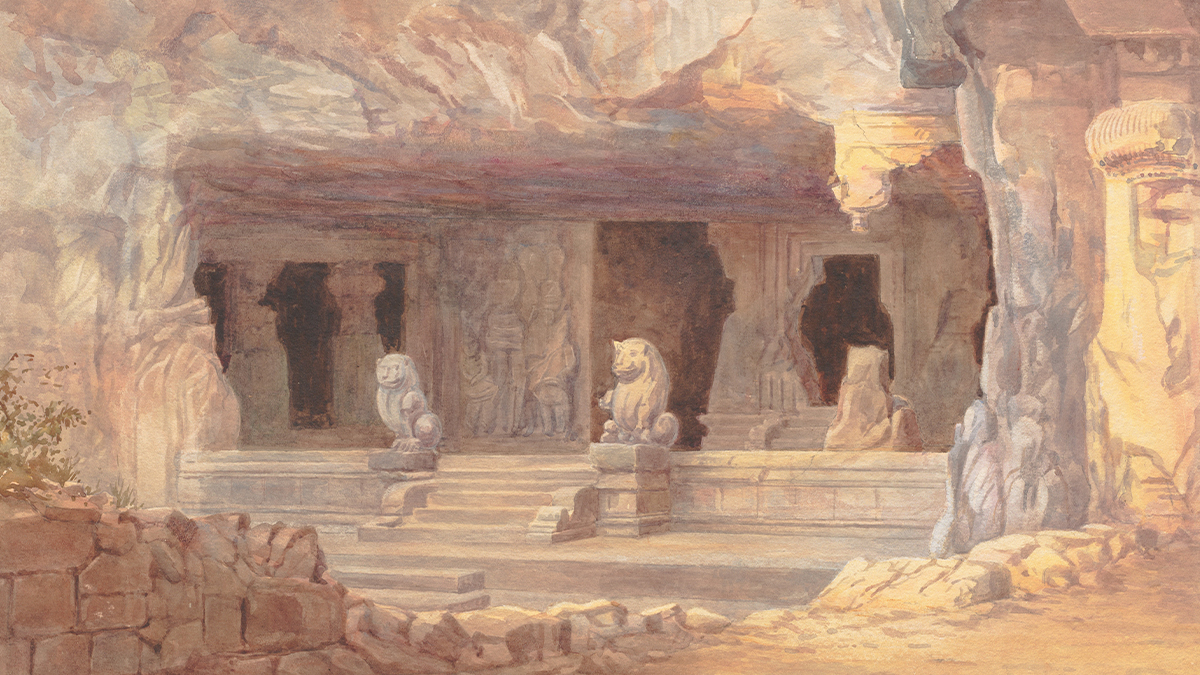Elephanta Caves - A Journey into Ancient Mysteries

About:
The UNESCO World Heritage Site Elephanta Caves is an example of medieval Indian rock-cut art and architecture. The caves are located on the Elephanta, also known as Gharapuri, island, 11 kilometers from Mumbai. The Elephanta Caves, also known locally as Gharapurichi Leni, are the ruins of once-colossal artwork. The skyline of Mumbai is breathtaking. A boat leaves from the Gateway of India for the Elephanta Caves. These cave temples are largely dedicated to Lord Shiva and date from the fifth to the seventh centuries.
The Elephanta Caves complex contains two sets of alcoves: the first is a big group of five Hindu caves, while the second is a smaller collection of two Buddhist caves. Stone carvings in Hindu caves depict the Shaiva Hindu faith. Sculptures depicting the three-headed Shiva, Gangadhar, the Ganga pouring into the soil, and the union of Shiva and Parvati into one body, Ardhnareshwar, may be found in these tunnels. The Elephanta Caves are a significant historical landmark as well as a fascinating hiking destination.
Architecture :
Elephanta Caverns are a collection of seven caverns on Elephanta Island in Mumbai Harbour, India. The main cave is dedicated to the Hindu deity Shiva and is considered one of India's greatest examples of rock-cut architecture. It is around 60,000 square feet and features a pillared mandapa, open porticoes, and an aisle. Ravana hoisting Kailash mountain, Shiva-Parvati on Kailash, Ardhanarishvara, Trimurti, Gangadhara, Shiva's wedding, Shiva slaying Andhaka, Nataraja, Yogishvara, and the Shiva Linga are all depicted on the cave's walls.
The Elephanta Caves' east wing temple features sculptures of Kartikeya, Matrikas, Ganesha, and Dvarapala, while the west wing shrine features Yogishvara and Nataraja. The caverns were constructed in the fifth or sixth centuries.
History :
The Elephanta Caves' past is shrouded in mystery, with no conclusive explanations. Some attribute their construction to the Pandavas, while others attribute it to Banasura, a Shiva-devotee demon. According to local legend, they were not erected by human hands at all.
Historians believe the caverns date from the late fifth to eighth centuries AD, while excavations have uncovered coins dating from the fourth century AD. Elephanta was the Konkan Mauryas' capital at the time and was known as Puri or Purika. Some historians think the Mauryas created the caverns during their rule.
According to some historians, the Kalachuris, who had ties to the Konkan Mauryas, constructed the caverns. This is because the Pashupata Shaivism, to which both the Kalachuris and the Konkan Mauryas belonged, was very important to the Elephanta Caves. The development of the caves is also attributed to the Rashtrakutas and Chalukyas.
The Gujarat Sultanate took control of the Elephanta Caves when the Chalukyas gave it to the Portuguese in 1534. Due to the enormous stone elephant monument that existed there, the Portuguese gave the island the name "Elephanta Island." Up until 1661, when the British took control, the caves under Portuguese rule had deteriorated significantly.
How to reach:
Take a local train to Churchgate or CST station from anywhere in Mumbai. You may either take a taxi from there or choose to walk to the Gateway of India. As an alternative, you can take a local bus to get to the Gateway of India directly. You must charter a ferry to the Elephanta Caves after you arrive at the Gateway of India.
Download Yatri the official Mumbai local train app
Best Time To Visit :
The best time to explore the caverns is during the cold winter months of November to February. Avoid traveling at the height of the monsoon (June to August), when ferry schedules are delayed and the sea becomes unpredictable. It is best to visit this location in the morning.
Dated August 25, 2023
